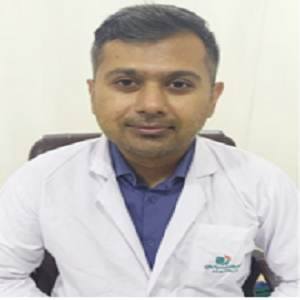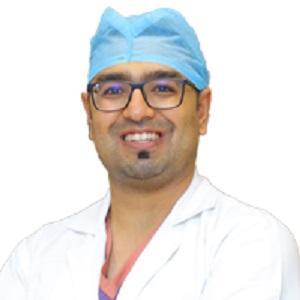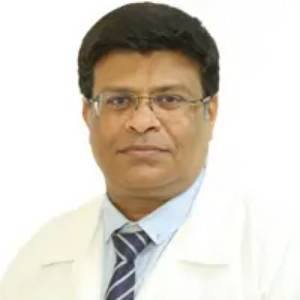Sports Medicine Overview
September 5, 2021
When you hear about sports medicine, you are likely to think that it is something meant for the treatment of complex injuries that professional athletes suffer on playing fields, bicycle paths, or ski slopes. However, in reality, it is an interdisciplinary medical specialty meant to provide care to a varying range of patients, be it a non-athlete or an athlete, elderly or young individual.
Innumerable sports-related injuries keep happening year after year. You are likely to experience such an injury if you lead an active lifestyle. Sports injuries are caused commonly due to overuse or trauma of joints and muscles. Fortunately, it is possible to prevent a lot of these injuries. It requires proper conditioning and training, wearing protective gear, and using appropriate equipment. Sports medicine specialists can help diagnose, treat, and prevent common sports-related injuries.
Sports medicine caters for a range of musculoskeletal injuries of the shoulder, knee, and other joints. The reason why the discipline is so useful is that these injuries occur to a diverse population and it requires typical care due to its nature. Apart from an orthopaedic surgeon, you may have to consult with a physiatrist, physician, paediatrician, or internist.
The goal of treatment is the same for every patient. It is all about addressing the condition or injury for which a patient is seeking medical attention. Also, if possible, the patient should be able return to the level of fitness and range of activities before the injury. All of it is done to help individuals remain active for as long as they can.
What is Sports medicine?
Also called Sports and Exercise Medicine (SEM), it is a branch of medicine that primarily deals with physical fitness. Sports medicine is concerned with the prevention and treatment of exercise and sports-related injuries and attain the best possible physical efficiency. This branch of medicine aims to help individuals effectively and safely engage in exercising activities so that they can train the way they need to.
In sports medicine, general medical education is combined with a few principles of exercise physiology, sports science, sports nutrition, sports psychology, biomechanics, and orthopaedics.
A team of sports medicine can include both non-medical and medical specialists such as physicians, athletic trainers, surgeons, sports psychologists, nutritionists, personal trainers, physical therapists, and coaches.
Specialists in sports medicine treat a variety of physical conditions such as acute traumas like sprains, fractures, dislocations, and strains. They are also involved in the treatment of chronic injuries due to overuse, such as tendonitis, overtraining syndrome, and degenerative diseases.
An interesting fact about this branch of medicine is that its evolution as a specialty was partly because of the special demands of professional athletes. However, the injuries that these athletes suffer doesn’t differ much from the ones a non-athlete may. There is no difference even in their recovery ability. If there is a difference, it is that an athlete is likely to be stronger and more determined to return to activity given its medically safe. There is also a financial aspect associated with returning to play as quickly as possible. However, a professional athlete does understand that proper rehabilitation and sufficient healing are extremely important. An amateur athlete, however, may want to push to get results more quickly.
Over the years, there have been significant advances made in the field of Sports Medicine. Athletes and non-athletes can benefit from these advances. The advent of arthroscopic techniques for knee injuries is an example of such advances being made. With this technology, a torn anterior cruciate ligament surgery can be carried out with a combination of small incisions, small instruments, and fiber optics instead of more invasive surgery. In a lot of cases, regional and local anaesthesia can be used and same-day surgeries are available as well.
Aftercare in sports medicine
After addressing the problem or injury, the primary concern for the physician and patient is to prevent the injury from happening again. Modification of activities might be recommended in some cases. Sometimes, this includes a modest change like changing the running surface or using different shoes. The change can be even extensive like elimination or restriction of specific recreational activities.
For some people, there might be a need for some psychological adjustment as well as a physical change. For instance, if a person relieves stress by jogging or running, he/she is likely to be reluctant to give up on the activity. Physicians with sports medicine training usually have experience dealing with many athletes. They have the expertise to help people find an alternative athletic activity that is safe and provides the same benefits while reducing the risk of an injury.
Apart from providing clinical care, many Sports Medicine team members also have involvement in educational activities, such as providing important information to athletes and coaches at the professional level. They may also address relevant concerns that a group might have.
Our Doctors
DR. YUGAL KARKHUR
MBBS,MS,DNB...
| Experience | : | 6 Yeras Experience |
|---|---|---|
| Speciality | : | Orthopaedics and Tra... | Location | : | Sector 8 |
| Timings | : | Mon/ Wed/ Fri : 11:0... |
DR. HIMANSHU KUSHWAH
MBBS, DIP IN ORTHO...
| Experience | : | 5 Yeras Experience |
|---|---|---|
| Speciality | : | Orthopaedics and Tra... | Location | : | Vikas Nagar |
| Timings | : | Mon - Sat : 10:00 AM... |
DR. SALMAN DURRANI
M.B.B.S, DNB (Orthop...
| Experience | : | 15 Yeras Experience |
|---|---|---|
| Speciality | : | Orthopaedics and Tra... | Location | : | Sector 8 |
| Timings | : | Thur - 10:00AM to 2:... |
DR. ALBERT DSOUZA
MBBS, MS (Ortho)...
| Experience | : | 17 Yeras Experience |
|---|---|---|
| Speciality | : | Orthopaedics and Tra... | Location | : | NSG Chowk |
| Timings | : | Tue, Thur & Sat : 05... |
DR SHAKTI AMAR GOEL
MBBS, MS (ORTHOPAEDI...
| Experience | : | 10 Yeras Experience |
|---|---|---|
| Speciality | : | Orthopaedics and Tra... | Location | : | NSG Chowk |
| Timings | : | Mon & Wed : 04:00 P... |
DR. ANKUR SINGH
MBBS, D.Ortho, DNB -...
| Experience | : | 11 Yeras Experience |
|---|---|---|
| Speciality | : | Orthopaedics and Tra... | Location | : | NSG Chowk |
| Timings | : | Mon - Sat : 10:00 A... |
DR. CHIRAG ARORA
MBBS, MS (ORTHO)...
| Experience | : | 10 Yeras Experience |
|---|---|---|
| Speciality | : | Orthopaedics and Tra... | Location | : | Sector 8 |
| Timings | : | Mon - Sat : 10:00 A... |
DR. SRIDHAR MUSTHYALA
MBBS...
| Experience | : | 11 Yeras Experience |
|---|---|---|
| Speciality | : | Orthopaedics and Tra... | Location | : | Ameerpet |
| Timings | : | Mon - Sat : 02:30 P... |
DR. A SHANMUGA SUNDARAM M.S.
MBBS, MS (Ortho), MC...
| Experience | : | 18 Yeras Experience |
|---|---|---|
| Speciality | : | Orthopaedics and Tra... | Location | : | MRC Nagar |
| Timings | : | Mon - Sat : On Call... |
DR. NAVEEN CHANDAR REDDY MARTHA
MBBS,D'Ortho,DNB...
| Experience | : | 10 Yeras Experience |
|---|---|---|
| Speciality | : | Orthopaedics and Tra... | Location | : | Ameerpet |
| Timings | : | Mon - Sat : 9:00 AM ... |
NOTICE BOARD
CONTACT US
CONTACT US
 Book Appointment
Book Appointment






.jpg)




.svg)
.svg)
.svg)
.svg)








